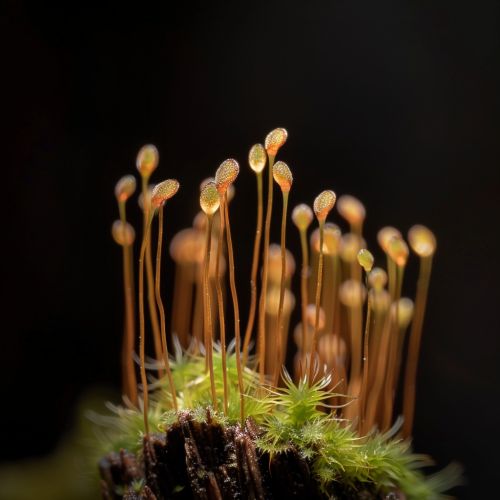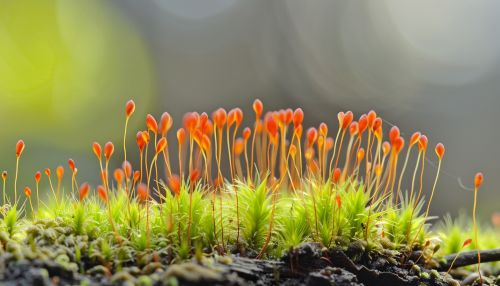Rhizoids
Introduction
Rhizoids are specialized structures that play a vital role in the life cycle of many plant species, particularly those in the non-vascular plant group, which includes mosses, liverworts, and hornworts. They are thin, root-like extensions that grow out from the lower surface of the plant, anchoring it to the substrate and absorbing water and nutrients. Unlike true roots, rhizoids are not complex structures and do not have specialized cells for nutrient absorption or transport.


Structure and Function
Rhizoids are typically unicellular or multicellular structures that extend from the lower surface of a plant's thallus, the non-differentiated body of algae, fungi, and some lower plants. They are generally thin, elongated, and hair-like, with a structure that is much simpler than that of true roots. Rhizoids are primarily involved in anchoring the plant to its substrate, whether that be soil, rock, or another plant, and in absorbing water and nutrients from the environment.
Rhizoids can be found in a variety of plant species, including non-vascular plants like mosses, liverworts, and hornworts, as well as some fungi and algae. In these organisms, rhizoids serve as the primary means of attachment and nutrient absorption, as they lack the complex root systems found in vascular plants.
Types of Rhizoids
There are three main types of rhizoids: unicellular, multicellular, and septate.
Unicellular rhizoids are composed of a single elongated cell. They are found in certain types of algae and fungi, as well as in liverworts and some mosses.
Multicellular rhizoids, as their name suggests, are composed of multiple cells. These rhizoids are found in certain types of algae and fungi, as well as in some mosses and hornworts.
Septate rhizoids are a type of multicellular rhizoid that have crosswalls, or septa, within them. These rhizoids are found in certain types of fungi.
Rhizoids in Non-Vascular Plants
In non-vascular plants, rhizoids play a crucial role in the plant's survival. These plants lack a vascular system, which in higher plants is responsible for the transport of water and nutrients from the roots to the rest of the plant. As such, non-vascular plants rely heavily on their rhizoids for these functions.
In mosses, liverworts, and hornworts, the rhizoids anchor the plant to its substrate and absorb water and nutrients directly from the environment. The absorbed water and nutrients are then transported throughout the plant via diffusion and cytoplasmic streaming, a process in which the cytoplasm within the plant cells circulates, carrying nutrients with it.
Rhizoids in Algae and Fungi
In certain types of algae and fungi, rhizoids also play a key role. They serve as the primary means of attachment to the substrate, allowing these organisms to anchor themselves in place. In addition, they are involved in the absorption of nutrients from the environment.
In algae, rhizoids can be either unicellular or multicellular, depending on the species. They are generally found in those algae that are attached to a substrate, such as certain types of green algae.
In fungi, rhizoids are typically found in the mycelium, the vegetative part of the fungus that is involved in nutrient absorption. They extend into the substrate, helping to anchor the fungus and absorb nutrients.
